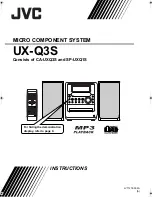
With this method of supply, the Mixer desk is classed as an “extra low
voltage” piece of equipment and it is therefore not legally necessary to bond its
metalwork to the mains earth, but this is normally done.
2.4.4 RF Rejection and Earthing
Any long lead connected to the mixer is liable to act as an aerial and feed RF
into the mixer where, if the level is sufficiently high, it may be rectified and result in
audible interference on the programme material.
This is counteracted by providing every input and output with a screened
transformer. These are placed as close as possible to the respective input and
output sockets and screened leads are used to connect the sockets to the
transformers.
The inter-winding screen of each transformer is connected to the chassis of
the cassette. The chassis of a cassette may become electrically connected to the
mixer frame by the fixing screws, but as the top panel of the cassette is painted, and
the fixing screws chrome plated, this cannot be relied upon. Interconnection of the
chassis is effected through a lead in the main cableform and four ways of each of
the multi-way plugs and sockets used for signal interconnections. As an added
precaution each cassette is provided with a screw terminal and a heavy gauge lead
with spade terminals, provides a very low resistance linkage.
Since all signal interconnections between cassettes are unbalanced, it is
most important that the common earthy return line should be of low resistance or
cross talk may be introduced.
The common signal point in each cassette, which is also the common point
of the positive and negative 20V lines, is insulated from the chassis, thereby
facilitating the tracing of earth faults in components or wiring. This is also connected
to the corresponding point of each of the other cassettes through four ways in
parallel of the multi-way plug and the main cableform. These interconnecting leads
in the main cableform, and the spade terminal interconnecting lead, each have a
spur near the centre provided with a spade tag. These are connected together and
to the main frame of the mixer at a terminal on the frame, at which point the whole
system may be connected to any suitable earth. In some circumstances it may be
impossible to obtain an earth, but even under these conditions the system gives
satisfactory results.
2.4.5 Metering
A VU meter is provided for each Main Cassette output, these being the
outputs which feed signal to the tape machines. The meters are mounted in a meter
box, which is part of the mixer frame. Since each Main Cassette contains two main
channels, two meters per cassette are required and these are mounted one above
the other, the upper meter being connected to the left channel and the lower being
connected to the right channel. The frame has a flying lead terminating in a 7-pin
plug for each pair of meters. Each main cassette has a corresponding 7-pin socket
carrying the VU meter signals. Since the mixer operating level is lower than normal
VU meter level, the meters are fed through amplifiers. These derive their input
signals prior to the output amplifiers and under normal conditions they give an
indication of 0VU when the open circuit output voltage is 0.447V rms. Under these
conditions the input voltage to the meter amplifier is 10dB less than this.










































